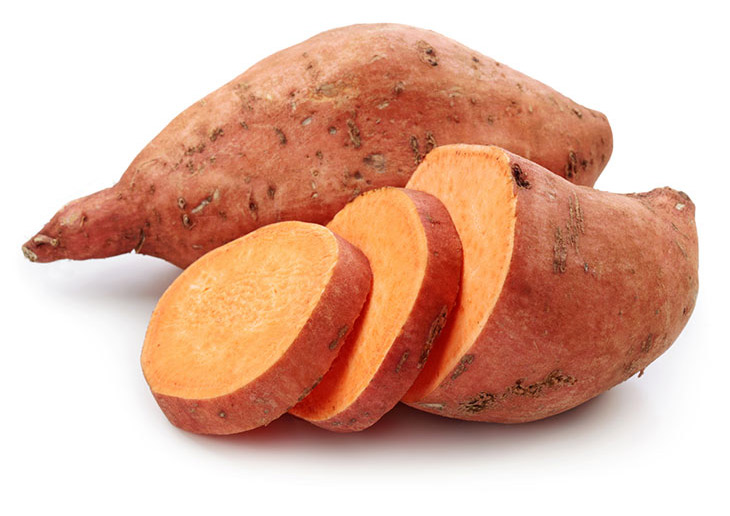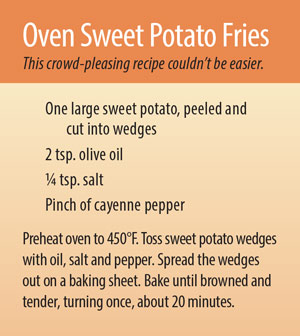Throughout human history, portable, low-spoilage foods have been a source of energy for travelers — think Native American Indians and their jerky, Australian farm workers and meat pies, or seafarers and hardtack. But there’s also another grab-and-carry food that is a nutritional storehouse and as much a part of history: the sweet potato.

Archeological evidence reveals that the sweet potato was domesticated in the Americas as far back as 2000 B.C. When Spanish explorers first came to the New World, they encountered the tropical root and carried it back to Spain, after which it spread throughout Europe, Africa and Asia. American colonists began cultivating the vegetable by 1648.
Staving Off Hunger in Hard Times
Easy to grow and store in warm climates and full of important nutrients, the sweet potato staved off hunger during times of U.S. shortage, from the Revolutionary and Civil Wars through the Great Depression and World War II. Indeed, it served as a compact nutritional package that could be thrown into a basket to carry to the fields or to school.
Recognizing the vegetable’s health benefits, Colonial physicians recommended sweet potatoes because of their value in combating childhood nutritional diseases. Confederates even used dried and roasted sweet potatoes as a coffee substitute.
Despite being an integral part of Southern food culture, the sweet potato’s popularity declined from more than 30 pounds per person per year in 1920 to about 4 pounds in 2000.
Demand on the Rise
These days, however, sweet potatoes are undergoing a revival. Longtime Mississippi Land Bank customer Jamie Earp attests to this trend. Since he began farming sweet potatoes in 1995, he has seen the demand for sweet potatoes grow dramatically because of their widely publicized health benefits. The sweet potato is generally considered one of the most nutritious vegetables.
“I’ve seen an increase in per capita consumption, from 3 to 4 pounds per person eight years ago to 7 to 8 pounds today,” says Earp. He and his brother Ricky own Earp Farms in Houlka, Miss., where they grow 250 acres of sweet potatoes.
Nationally, production — with Mississippi among the five top-producing states — has kept up with demand. According to a study by the USDA Economic Research Service, Mississippi production increased by 155 percent from 2000 through 2014.

Eat Some Taters
Multiple studies have shown better absorption of the abundant beta-carotene from sweet potatoes when fat-containing foods are consumed along with them. It doesn’t take much fat for this better absorption to take place — only 3 to 5 grams. So if you bake a potato, add a little olive oil or butter.
Earp admits that his family likes sweet potatoes, and that his favorite way to eat them is in sweet potato pie. No matter how you use them, rest assured that doing so will benefit your health and be tasty, too.
– Staff
NUTRITIONAL CONTENT
One medium-size baked sweet potato, equivalent to about one cup, contains 180 calories, and the percent daily value of the following nutrients:
- vitamin A, 214 percent
- vitamin C, 52 percent
- vitamin B6, 34 percent
It is also a good source of essential minerals, such as potassium, and vitamins B3 and B1.
HEALTH BENEFITS
A member of the morning glory family, the sweet potato is unrelated to the white potato or the yam, and has many more health benefits:
- High levels of beta-carotene, an antioxidant
- Anti-inflammatory properties
- High in dietary fiber